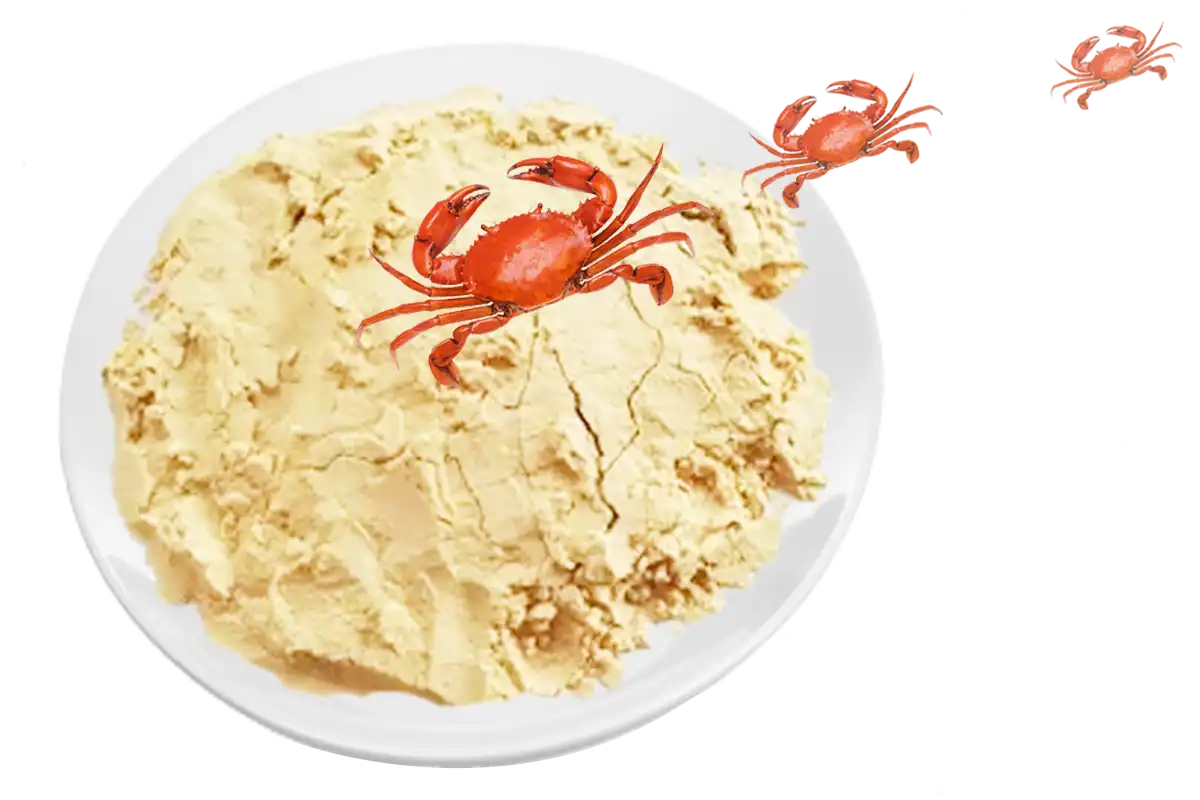
A little crab
is enough to change the world

is enough to change the world
Chitin, which is widely found in shrimp and crab shells, is a polysaccharide made by the polymerization of N acetyl glucosamine.
Chitin is deacetylated to obtain chitosan.
In the past ten years, the research on chitin and chitosan has been widely carried out at home and abroad, and their functions in anti-tumor and prevention and treatment of pathogenic microorganisms have attracted more and more attention. However, due to its insoluble water, it is very limited in the development of applications. To this end, chitosan is degraded into Chito-oligosaccharides (also known as oligosaccharides, chitosan oligosaccharides, chitosan oligosaccharides) by appropriate methods, that is, oligosaccharides composed of 2~10 aminoglycoses linked by β-1-4 glycosidic bonds.
Through a series of experiments, it has been found that it not only has good water solubility, is easy to be absorbed by the human body, but also has a variety of physiological functions such as antibacterial, anti-tumor, blood lipid regulation, immune regulation and activation of intestinal bifidobacteria, and the application field has been greatly broadened.
Chito-oligosaccharides has a unique application value in fine chemicals, biomedicine, health food, agriculture, forestry and animal husbandry.

Chito-oligosaccharides chemical structure

2.1 Biological activity. Chito-oligosaccharides has a water solubility of more than 99% and a human absorption rate of 99.88%, which has superior biological activity than chitosan. It can improve the flora distribution of intestinal microbes, stimulate the growth of beneficial bacteria, and its pharmacological activity is 14 times that of chitosan of the same weight. Experiments have shown that Chito-oligosaccharides can proliferate Bifidobacterium by 120 times when applied to dairy products.
2. 2 Antibacterial and antibacterial effect. Chito-oligosaccharides has a pronounced antibacterial and antibacterial effect. Its antibacterial effect is also gradually enhanced with the decrease of the molecular weight of Chito-oligosaccharides, with a molecular weight of 1 814, the degree of deacetylation of 84% Chito-oligosaccharides treated non-woven fabrics, it was found that the concentration of 0.01% against Proteus vulgaris reached 90%, while for Staphylococcus aureus and Escherichia coli, 0.05%, the molecular weight is 2 000~ 30 000, and the degree of deacetylation is 91.5% Chito-oligosaccharides inactivates two oral pathogens, Actinobacillus actinobacillus and Streptococcus mutans.
2. 3 Anti-tumor effects. Chito-oligosaccharides can improve the body's immune activity and anti-cancer ability, and has a significant inhibitory effect on liver cancer cells.
2. 4 Disease prevention and disease resistance of plants. Chito-oligosaccharides also acts as a plant regulator to enhance the plant's defenses against pests and diseases. Oligosaccharides have the functions of regulating plant growth, development, reproduction, disease prevention and resistance, etc., can stimulate the immune system response of plants, activate defense responses, produce active substances with disease resistance, and inhibit the formation of diseases.
Chito-oligosaccharides are derived from marine crab shells and offer several advantages and functions when used for disinfection applications:
Antimicrobial properties: Chito-oligosaccharides have strong antimicrobial properties against a wide range of pathogens, including bacteria, fungi, and viruses. This makes it an effective disinfectant.
Biodegradability: As a natural biopolymer, Chito-oligosaccharides are biodegradable. This quality makes it environmentally friendly compared to synthetic disinfectants, which can accumulate and cause environmental damage.
Non-toxic: Unlike many chemical disinfectants, Chito-oligosaccharides are non-toxic to humans and animals at the concentrations used for disinfection. This makes it safe to use in a variety of settings, including food preservation, water treatment, and surface disinfection.
Film-forming capacity: Chitosan can form bioactive films and coatings that can be applied to surfaces to extend antimicrobial protection. This is especially useful for keeping surfaces sterile without continuous use of disinfectants.
Metal ion chelation: Chitosan has the ability to chelate metal ions, which can enhance its antimicrobial effect. The presence of chitosan can disrupt the microbial cell wall by binding to essential metals required by bacteria and fungi.
Enhanced efficacy through pH sensitivity: The antimicrobial activity of chitosan can be enhanced in acidic environments, which is beneficial because many disinfection scenarios involve controlled pH conditions.
These properties make Chito-oligosaccharides an attractive option for disinfection in a variety of applications, especially when environmental impact and human safety are concerned
The service has a warm connection with the customer